If you’ve followed my adventures to Oregon wine country here and here (to name a couple) you know that I’ve got mad love for the wines of the entire state! Since the dreaded ‘Rona reared its ugly head, there has been so much going on there with some really notable changes. Of course, we were all locked down and some of it sorta went unnoticed. Emerging from the pandemic, the changes have continued. One of the big changes has been the creation of additional Willamette Valley AVAs. American Viticultural Area (“AVA”) is just a fancy way of saying a designated region. And for Oregon, it’s a big deal.
Why does it matter? Because knowing the characteristics of a AVA/region helps winegrowers understand the characteristics and qualities of the area the grapes come from. And it helps consumers understand what they are getting. When you buy a Napa Cabernet Sauvignon, you expect certain things as opposed to a “California” or an “America” Cab. That ‘Napa Valley’ on the label means something and connotes value to consumers. The same is true of Willamette Valley AVAs. In fact, Oregon has one of the most strict blending standards in the country. The general rule is that 85% of the grapes must come from the named AVA if it’s listed on the bottle. Oregon ups the ante and requires 95% for a listed AVA, and 100% if you list a specific vineyard on the wine label. So yes, AVAs are very much a big deal in Oregon. Not too long ago, I had the opportunity to take a deep dive on some of the newest AVAs.

A Little History of Willamette Valley AVAs
Like the Columbia Valley AVA that covers much of Washington State and the Texas Hill Country AVA, Oregon’s Willamette Valley just seemed too big. Luckily, the study continues and growers and producers keep finding unique and varied characteristics about the growing region and are able to carve out new regions. Small distances of a few miles or even feet, can result in dramatically different expressions of a varietal. This is particularly trie of the region’s signature variety – Pinot Noir.
After being established back in 1983, the Willamette Valley AVA is what we had for many years when it came to the wines of northern Oregon. But at 3,438,000 acres (5372 square miles), there was obviously a great deal of variability in the soils and climate in such a large expanse of land. As they went from being the new kids on the block to a more established region, the region’s vineyards and wineries began to recognize the unique aspects of different portions of the Willamette Valley. There was then, and continues to be today, more and more people creating and investing in wineries in the Willamette Valley, which means more vines under acre and more opportunities to learn about the land’s characteristics.
In 2002, a collaborative group on vintages and wineries got together to carve up the region and submit maps to the Alcohol and Tobacco Tax and Trade Bureau (“TTB”). And so it was a few yeas later that in 2005 and 2006, the Willamette Valley received its first set of nested AVAs – Chehalem Mountains, Dundee Hills, Eola-Amity Hills, McMinnville, Ribbon Ridge (had an amazing visit there a few years ago), and Yamhill-Carlton. And that’s the way it styled for well over a decade. To be fair, it’s a LOT of work and bureaucracy to create a new federally designated region. But you also need vines in the ground and time to observe the characteristics of the grapes and the region. But as more vineyards have been planted and more wineries established, the Willamette Valley is ready for the next phase.
After 13 Years…
After 13 years of no new sub-AVAs, the Willamette Valley is once again further deliminating portions of the larger region.
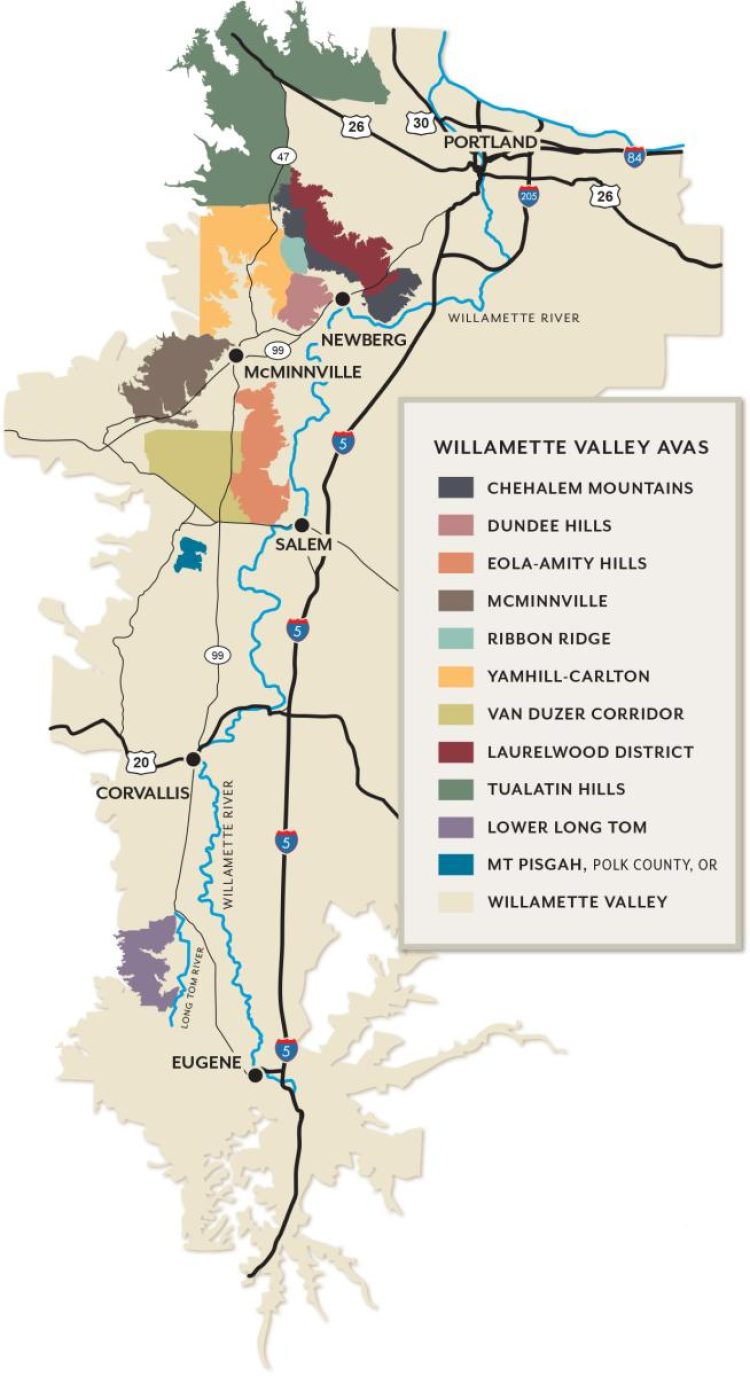
Van Duzer Corridor AVA
The first of the recent activity began in 2019 with the creation of the Van Duzer Corridor AVA. The almost 36 square mile region is distinctive for the low elevation area in the Coast Range mountains which has a gap that forms a wind corridor. This wine gap corridor allows consistent winds at high speeds into the area. These winds lead to thicker skin and greater phenolic ripeness in the grapes. Specifically, the wind’s cooling effect enhances the carbon loading in grapeskins, where flavor and phenolic components develop, leading to complex wines with great depth and intensity. Think beautiful, rich, ripe fruits accompanied by bright acidity. And I was thrilled to hear that Gamay shows great potential here.
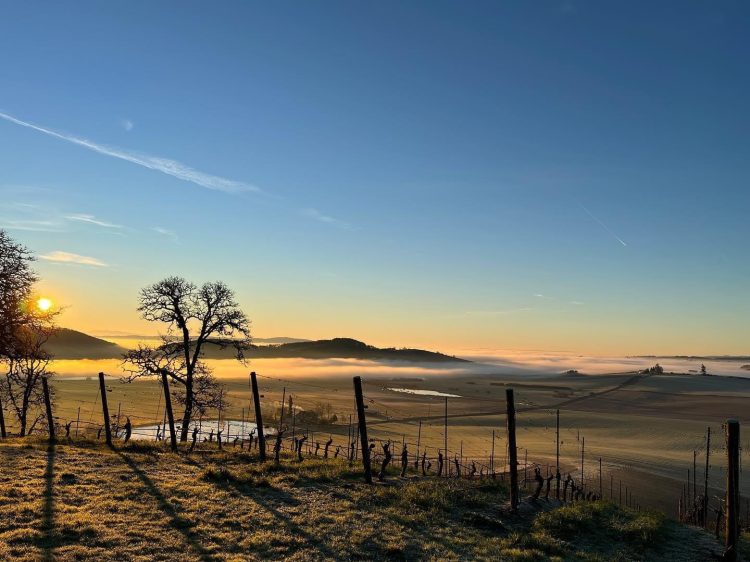
Laurelwood District AVA
During the escalation of the pandemic, the Tualatin Hills and Laurelwood District AVAs were approved in June 2020 and many of us didn’t even realize it. Ponzi Vineyards (who recently celebrated 50 years!) and Dion Vineyards championed its petition and had in fact, been discussing its creation for almost a decade. Laurelwood was formed within the existing Chehalem Mountains AVA and was even a part of the initial discussions back in 2002 when the original nested AVAs were being drawn. Dion had been planted a vineyard in the area in 1973 and had always been passionate about it being an AVA.
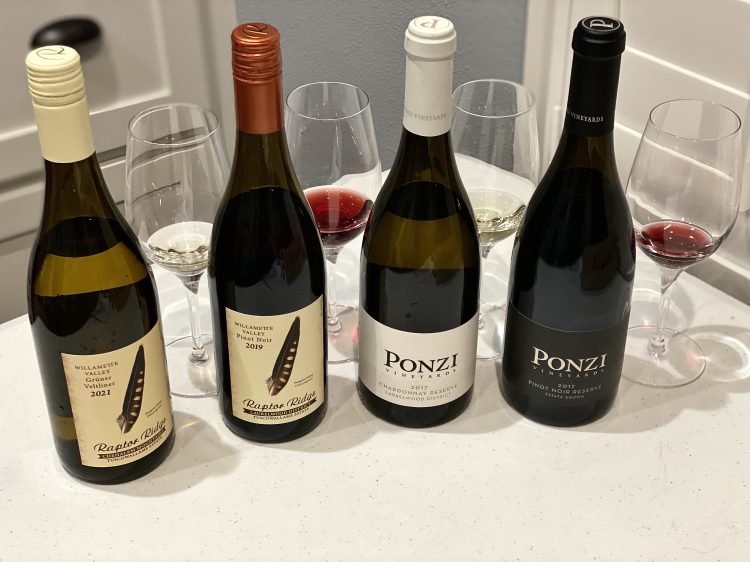
The region came about based solely on its unique Laurelwood soil which is comprised of 15-million-year-old volcanic basalt and a 200,000 year old sedimentary, fresh-water loess top soil. Many, if not most AVAs are based on geographic areas which makes Laurelwood pretty unique. And yes, the complex soil type leads to complex wines. The red wines often have a cracked white pepper spiciness to them, and Pinot specifically shows Italian plums with robust yet fine-grained tannins. Even more, the white wines (including Chardonnay, Pinot Gris, and Grüner Veltliner) love the soil and offer up creamy, silky textures and beautiful aromatics. And as an acid head, I love the acidic kick from basalt soils. The region also sits at the highest elevation in the Willamette Valley – 1,633 feet.
Tualatin Hills AVA
The Tualatin Hills AVA was created at the same time as the Laurelwood District AVA in 2020. It is located in the northwesternmost corner of the Willamette Valley and is named for its proximity to, and the fact that it is defined by, the watershed of the Tualatin River. It’s a bit cooler given its northern locale and also has great proximity to the Coast Range, which is a significant geologic feature that provides shelter from the Pacific Ocean.
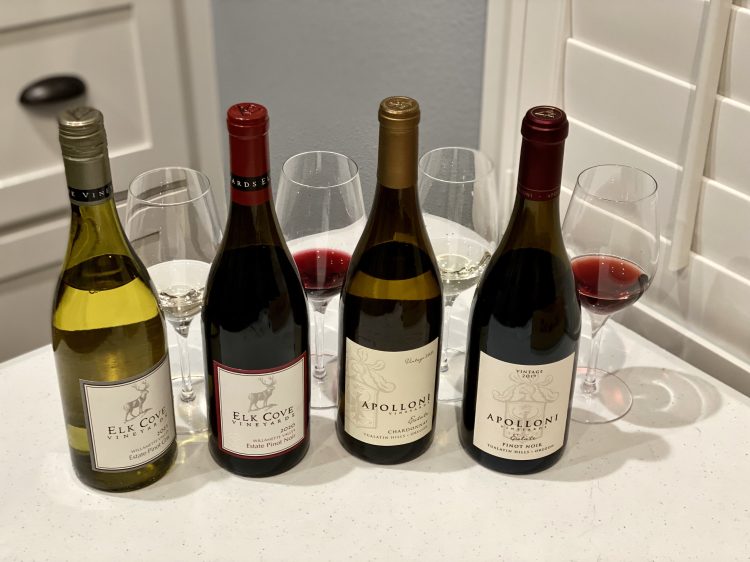
Like Laurelwood, the 15-mile, 1000-acre Tualatin Hills region is also a soil-based AVA. It also features Laurelwood soil and loess, but also has Kinton and Cornelius soils in the mix. Compared to Laurelwood, Tualatin Hills sits at a lower elevation and is slightly warmer. The wines (at least the ones that I’ve had) seem to exhibit more pronounced fruit, but the bright acidity is present. Tualatin Hills has a long agricultural history and is home to the very first commercial vineyard in the Willamette Valley, known today as David Hill.
Lower Long Tom AVA
While a significant part of carving up the Willamette Valley has occurred in the northern portions of the region, the Lower Long Tom AVA deviates from this trend. Established in November 2021, it is now the southernmost sub-region in the Willamette Valley. Located between Corvallis and Eugene, I think I was surprised to see its location and didn’t quite appreciate that the Willamette Valley AVA went so far south.
During the period of development of the Willamette Valley, the north valley really took off, but not much changed in the south valley for years. When wines from the south valley got talked about, they were just lumped in the Willamette Valley and not much more was known about their character or the story of where the wines came from. Because of this, in the early 2010s, a real push was made to create a sub-AVA in the south valley.
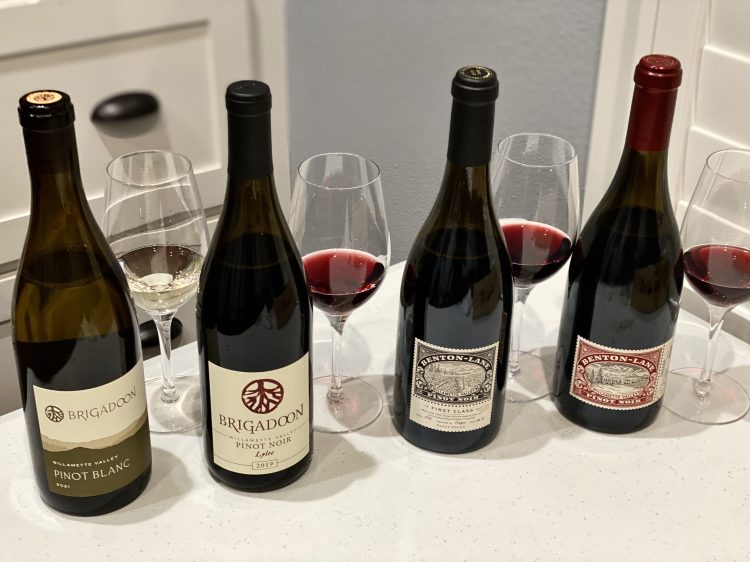
The region’s soils are sedimentary soils (similar to Yamhill Carlton and parts of Chehalem) which provides the wines with nice structure and the ability to age. Like the cooling effect of the Van Duzer corridor in the north valley, the south also gets a cooling influence from a couple of areas. The highway from the coast to Corvallis and from the coast to Eugene act as air corridors and bring cool air into the area. Additionally, the Lower Long Tom is nestled against the Coast Range in between the two air corridors. The tall peaks help to keep some warm air over the region, sort of like a warm air eddy. Adding, the tall mountains to the west also provide the region with the ability to avoid bad weather systems, particularly in the fall, which gives them the ability to hang fruit for a longer period of time and soften the tannins in the grapes. The region also has a fair amount of older wines.
When it come to the wine, the white wines have great acid tension courtesy of the region’s cooler nights as well as more stone fruit and citrus as opposed to tropical fruit. The reds seem to exhibit darker red to blue fruit.
Mount Pisgah, Polk County, Oregon AVA
The most recent change comes in the form of the Mount Pisgah, Polk County, Oregon AVA which came on board in July 2022. Situated in the middle of the long north to south Willamette Valley, Mount Pisgah, Polk County is the second smallest AVA. It is also the second southernmost next to Lower Long Tom. The region has a number of climatic influences including receiving warmth from the Willamette River, a mild cooling influence from the Van Duzer corridor just to the north, as well as the rain shadow of the Laurel Mountain.
Overall, it is warmer and less windy than the regions just to its north. This results in wines that are bolder, more tannic, with earthy and darker fruit flavors. While Pinot Noir reigns supreme of course, I was intrigued to see a bit of Tempranillo being grown in the region. Right now, there are just two wineries and three tasting rooms, but with excitement and understanding of the region’s characteristics building, it won’t be long before newcomers embrace the newest AVA.
Yes, it seems a little geeky, but I’ve been excited to see all of the new Willamette Valley AVAs. I love that people are continuing to learn about the area and I’ve made it a point to seek out the wines when I can. I keep thinking how cool it would be to do a comparative tasting of Pinot from these regions. It would also be fun to visit and take a deep dive on a couple of the AVAs as I was able to do with the Ribbon Ridge AVA. Always planning…


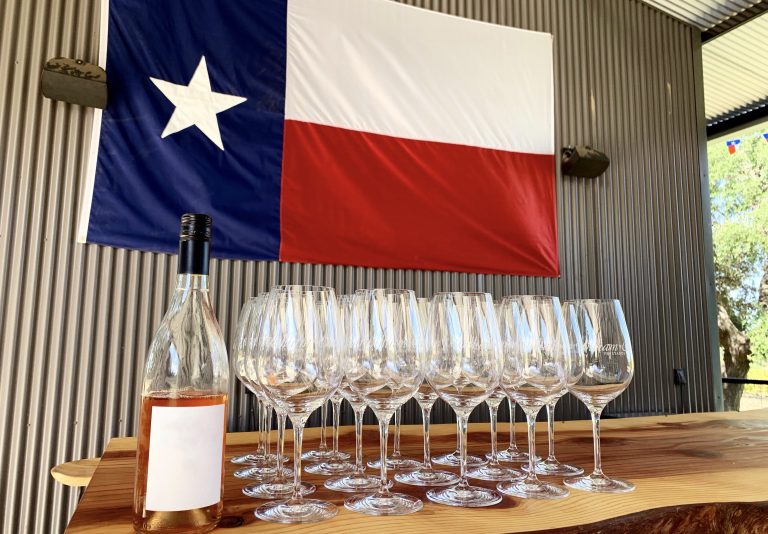


4 Comments
Jeremy Parzen
•9 months ago
Great post! And awesome to see Oregon stepping up and becoming a leader in our industry. I love Oregon wines. Thanks for sharing this Kat!
Kat
•9 months ago
Yes! It seems they are doing some great things out there. Great region all around.
Anna Campbell
•9 months ago
Thanks for exploring Oregon AVAs! We’re very excited to be growing our fruit on multiple AVAs and especially excited to see the Tualatin Hills get recognition as an official wine region. CHEERS!
Kat
•9 months ago
It’s been great to see them coming on board.